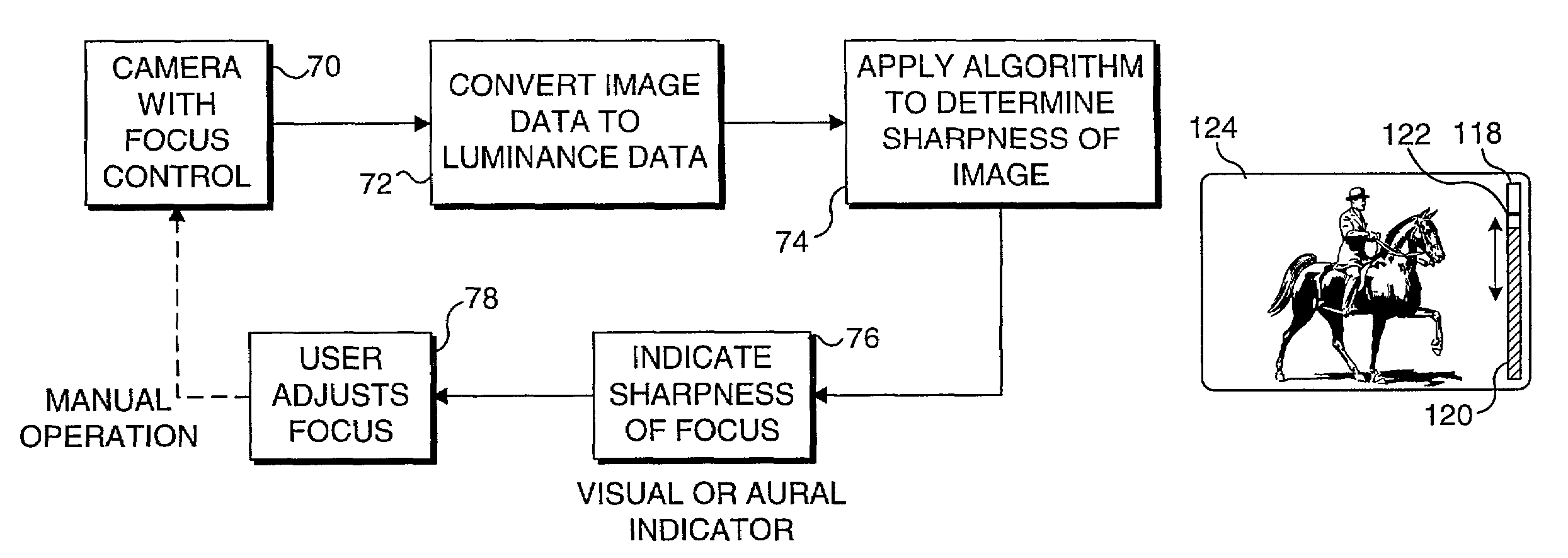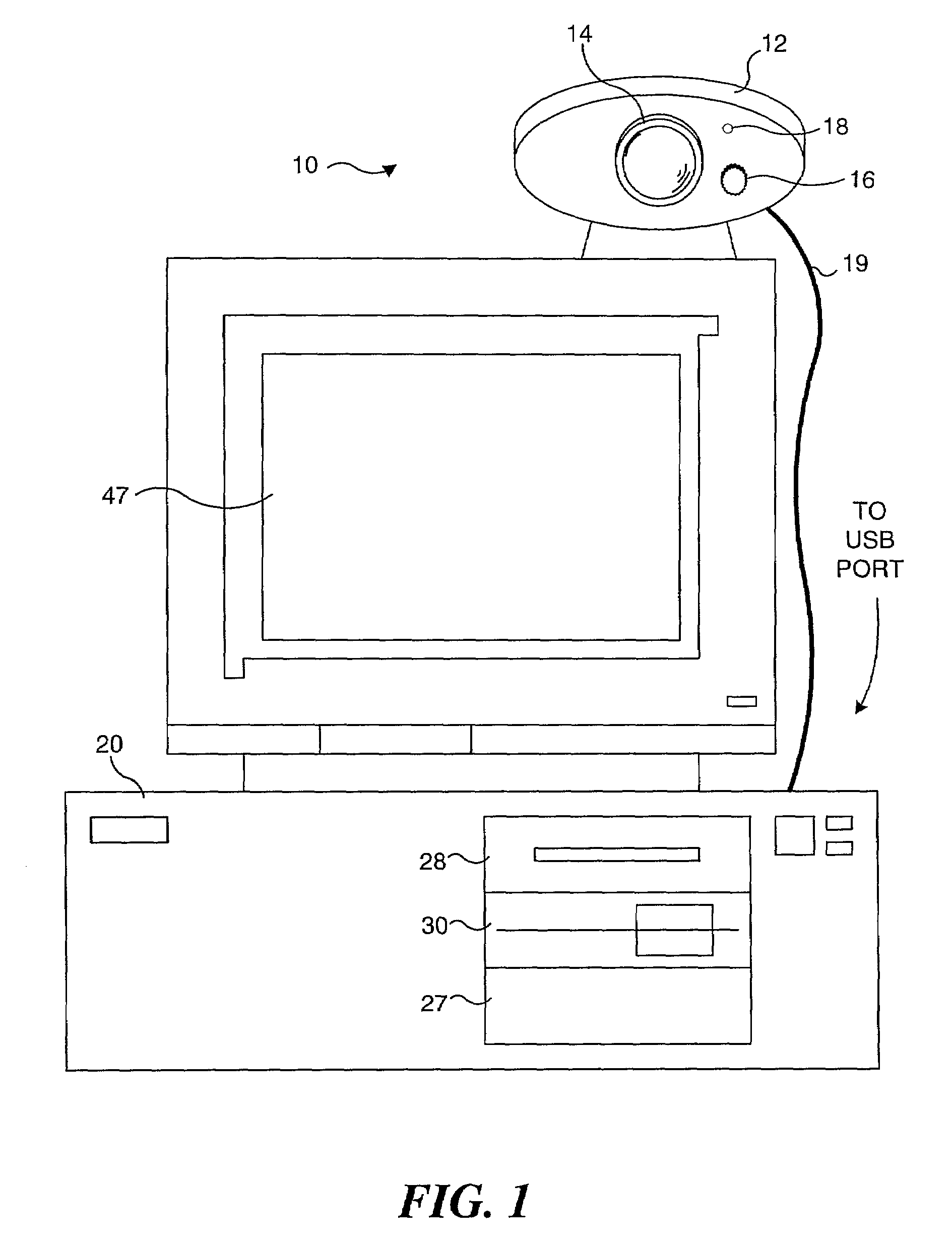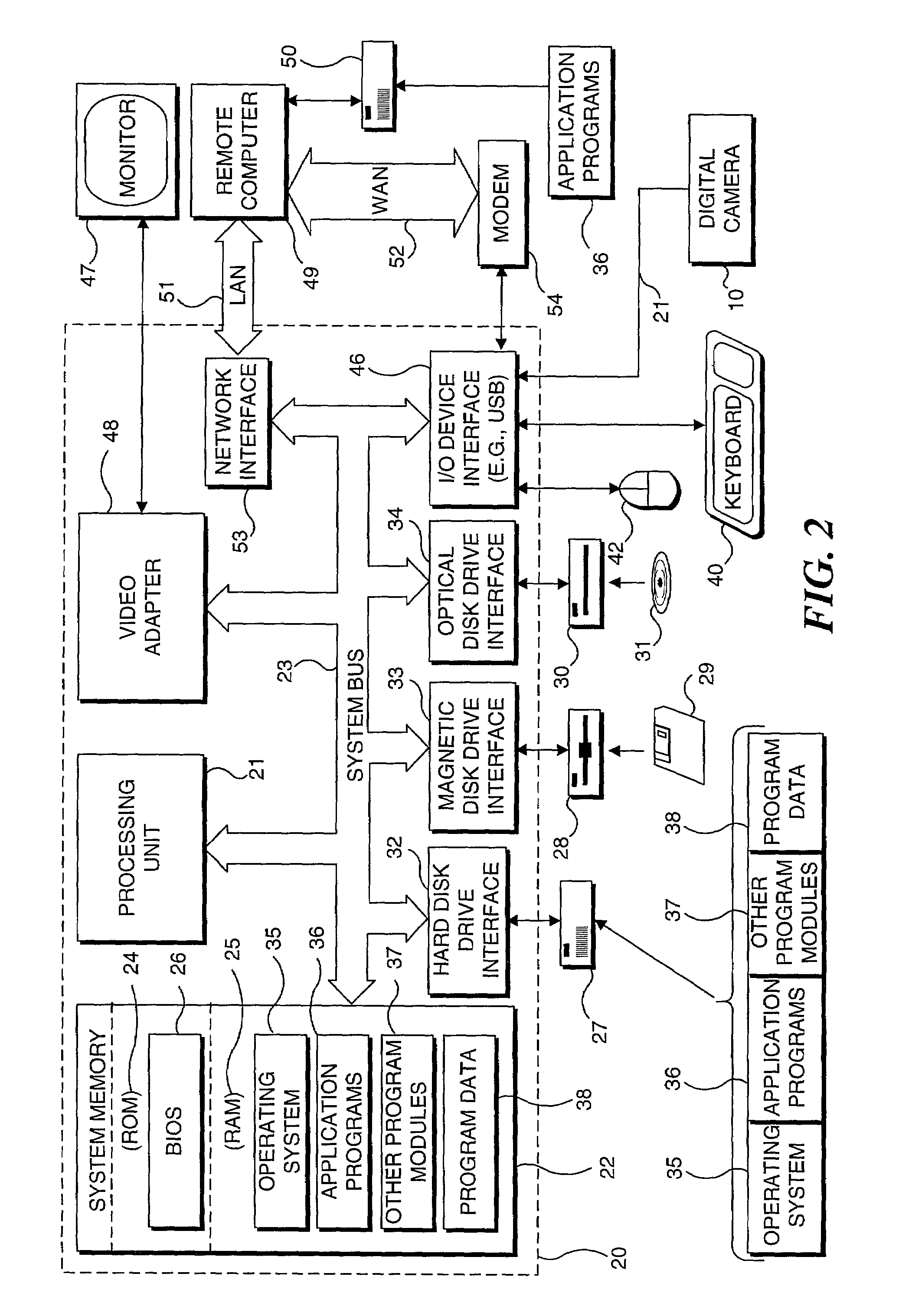Focusing aid for camera
- Summary
- Abstract
- Description
- Claims
- Application Information
AI Technical Summary
Benefits of technology
Problems solved by technology
Method used
Image
Examples
embodiment
Camera Implemented Embodiment
[0055]From the preceding discussion of FIGS. 8A–8D, it will be apparent that a visual indication provided on monitor 47 of PC 20 was employed to assist the user in achieving the sharpest possible focus of PC camera 10 (shown in FIG. 1). The algorithm used to determine the sharpness of focus is in this case carried out as PC 20 executes corresponding software instructions stored in memory, which also cause the PC to display bar graph 134 and maximum indication 136. However, it is also contemplated that this or other appropriate algorithm used to determine the sharpness of focus can instead be implemented by a processor included within a camera and that a visual or aural indication of the sharpness of focus can be provided to a user of the camera without need for an algorithm to executed by a host computing device. In this case, the camera can be used in a standalone mode, without being coupled to a PC or other host computing device, or even if so coupled,...
PUM
 Login to View More
Login to View More Abstract
Description
Claims
Application Information
 Login to View More
Login to View More - R&D
- Intellectual Property
- Life Sciences
- Materials
- Tech Scout
- Unparalleled Data Quality
- Higher Quality Content
- 60% Fewer Hallucinations
Browse by: Latest US Patents, China's latest patents, Technical Efficacy Thesaurus, Application Domain, Technology Topic, Popular Technical Reports.
© 2025 PatSnap. All rights reserved.Legal|Privacy policy|Modern Slavery Act Transparency Statement|Sitemap|About US| Contact US: help@patsnap.com



